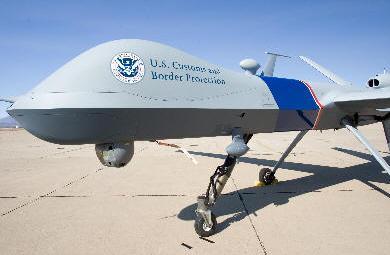 |
|
|
|
|
|
|||
|
By Daniel Baxter |
||||
 |
May 20, 2010 -
Congressman Henry Cuellar (TX-28), Chairman of the Subcommittee on
Border, Maritime and Global Counterterrorism, announced that the Federal
Aviation Administration (FAA) has approved a Certification of
Authorization (COA) for an unmanned aerial vehicle to patrol a portion
of the U.S. Mexico border extending from This is one of two COAs that have been submitted to FAA to approve the flights of unmanned aerial vehicles along the Texas-Mexico border. “This is the first of two steps in getting unmanned aircraft vehicles approved to patrol the entire Texas-Mexico border,” said Congressman Cuellar. |
|||
|
|
||||
|
“This is very good
news for
Congressman
Cuellar has long advocated for an additional COA currently pending
before the FAA. If approved, this COA would approve the use of an UAV
from An unmanned aerial vehicle (UAV; also known as a remotely piloted vehicle or RPV, or Unmanned Aircraft System (UAS)) is an aircraft that flies without a human crew on board the aircraft. Their largest uses are in military applications. To distinguish UAVs from missiles, a UAV is defined as a reusable, uncrewed vehicle capable of controlled, sustained, level flight and powered by a jet or reciprocating engine. There are a wide variety of UAV shapes, sizes, configurations, and characteristics. Historically, UAVs were simple drones (remotely piloted aircraft), but autonomous control is increasingly being employed in UAVs. UAVs come in two varieties: some are controlled from a remote location, and others fly autonomously based on pre-programmed flight plans using more complex dynamic automation systems. |
||||

